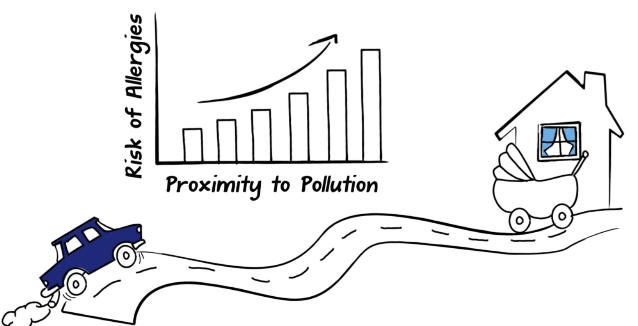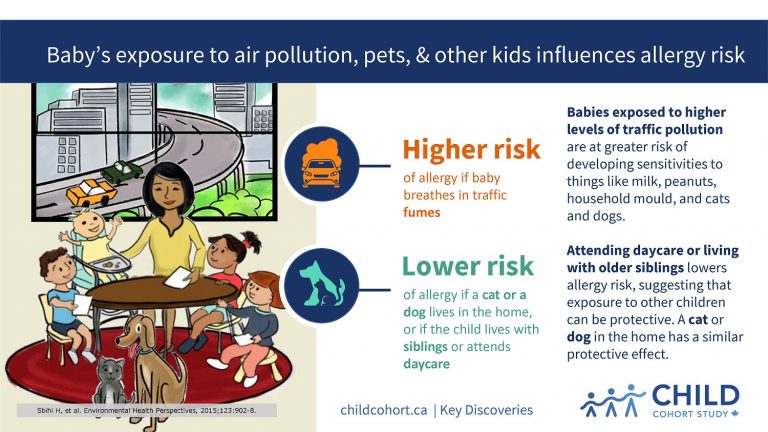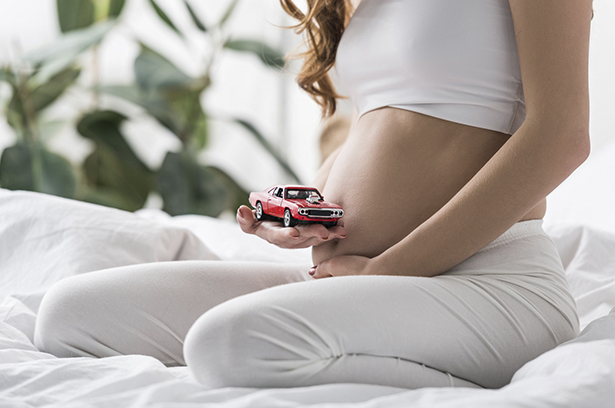Baby's exposure to air pollution, pets, & other kids influences allergy risk
Can breathing in traffic fumes during infancy increase the risk of allergies later on? Yes, according to research led by AllerGen investigators Drs Michael Brauer (The University of British Columbia) and Hind Sbihi (BC Ministry of Health).
Using data from over 2,400 children participating in the CHILD Cohort Study (CHILD), the team found that babies who were exposed to higher levels of traffic pollution during their first year of life were at greater risk of developing sensitivities to things like milk or peanuts, household mould, and even to cats and dogs.
“With the increasing rates of allergies among children in Canada and elsewhere, we were interested in determining if air pollution from traffic might be partially responsible,” says Dr. Brauer.
“This was the first study to find a link between air pollution and measured allergic sensitization during the first year.”
Even a small increase in a baby’s exposure to air pollution increased the allergy risk, according to the researchers.
SIBLINGS, PETS LESSEN ALLERGY RISK
The study, published in May 2015 in the journal Environmental Health Perspectives, also found factors linked to lower allergy rates, such as owning a cat or a dog, and living in a home with no attached garage.
While infants exposed to air pollution were at greater risk, researchers did not find a link between mothers exposed to air pollution during pregnancy and allergy risk in their children. Vancouver had the largest proportion of children to develop sensitivity to allergens (23.5%), compared to Toronto and Edmonton (17% each), and Manitoba (9%).
“Understanding which environmental exposures in early life affect the development of allergies can help tailor preventative measures for children,” says first author Dr. Sbihi, who was a PhD candidate at UBC at the time.
“We also found that children who attended daycare or with older siblings in the household were less likely to develop allergic sensitization, suggesting that exposure to other children can be protective.”





